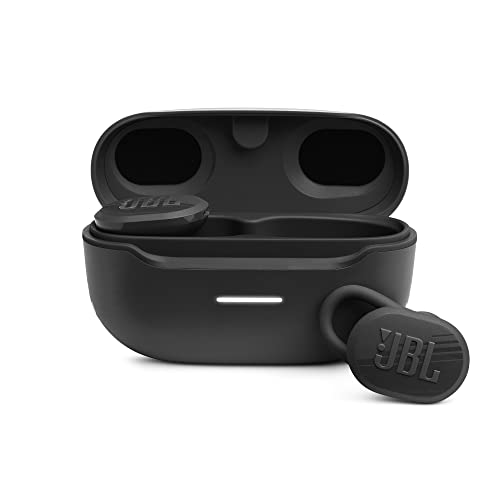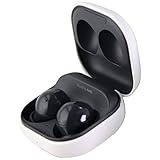Are you tired of the tangled mess that comes with wired earbuds? Enter wireless earbuds! These nifty gadgets are incredibly convenient and can provide high-quality sound without any cords getting in your way. But with so many options on the market, how do you know which ones to choose? That’s where Consumer Reports comes in. We’ve rounded up the best wireless earbuds currently available based on our rigorous testing and analysis. Keep reading to discover our top picks and learn everything you need to know about these game-changing devices.
Top 10 Wireless Earbuds
*Note: Score is based on our AI score (Editor’s choice and rating).
What Is Wireless Earbuds?
Wireless earbuds, as the name suggests, are earbuds that don’t require any cords or wires to function. Instead of plugging them into your device like traditional wired earbuds, you connect wireless earbuds to your phone or other devices through Bluetooth technology.
Bluetooth is a short-range wireless communication technology that allows electronic devices to communicate with each other without requiring a physical connection. This means you can listen to music or take phone calls on your wireless earbuds while leaving your phone in your pocket or bag.
The absence of cords makes these earbuds incredibly convenient for activities such as working out or commuting since they won’t get tangled up in anything. Additionally, many models come with features such as touch controls and noise-cancellation technology which further enhances their usability.
While the sound quality may not be quite on par with high-end wired headphones, modern advancements have made it possible for wireless earbud sound quality to rival their wired counterparts. If you’re looking for convenience and versatility in an audio device, then investing in a pair of wireless earbuds might just be worth considering.
How Does Wireless Earbuds Work?
Wireless earbuds, as the name suggests, are earbuds that don’t require any wires to connect them to your device. Instead of a traditional wired connection, they use Bluetooth technology to wirelessly transmit audio signals from the source device to the earbuds.
In simple terms, wireless earbuds work by establishing a wireless connection between two Bluetooth-enabled devices – your smartphone or laptop and the earbuds themselves. When you play audio on your phone or laptop, it is transmitted via Bluetooth in a digital format.
The wireless signal is then picked up by an antenna located inside each of the earpieces. The antenna converts these radio waves into electrical signals that are sent through tiny speakers housed within each bud.
The left and right buds communicate with each other using another form of wireless technology called Near Field Magnetic Induction (NFMI). This allows for seamless communication between both ears without any noticeable latency issues.
This combination of Bluetooth and NFMI technologies enables high-quality audio streaming with minimal lag time between sound transmission and reception. And because there’s no cord connecting them, you can move around freely while enjoying your favorite tunes or taking calls hands-free!
The Different Types of Wireless Earbuds
Wireless earbuds have become increasingly popular in recent years. With different types of wireless earbuds available, it’s important to know the differences so you can choose the right pair for your needs.
The first type of wireless earbuds are true wireless earbuds, which don’t have any wires connecting the left and right buds. These are great for active individuals who don’t want cords getting in their way during workouts or runs.
Another type is neckband-style wireless earbuds that have a small band that rests on your neck and connects to each bud with short cables. They’re more secure than true wireless buds and often come with longer battery life.
In-ear headphones also provide good sound quality while being lightweight and portable, but they still use a wire connecting both sides together.
Over-ear Bluetooth headphones offer high-quality audio performance at an affordable price point while having long battery life too.
It’s important to consider what features matter most before buying a pair of wireless earbuds. Whether you prioritize comfort, portability or sound quality will determine which style works best for you.
Factors to Consider Before Buying Wireless Earbuds
Before buying wireless earbuds, it’s essential to consider several factors to ensure that you get the best value for your money. Firstly, make sure that the earbuds have a good battery life. The last thing you want is for your earbuds to die on you in the middle of a workout or an important call.
Secondly, take note of the sound quality and noise isolation capabilities. You don’t want to invest in a pair of wireless earbuds only to find out they produce mediocre sound quality or fail at blocking external noises completely.
Thirdly, check how comfortable they are when worn, especially if you plan on using them for extended periods. Make sure they fit snugly and securely without causing any discomfort.
Fourthly, consider their connectivity options. Some wireless earbuds offer better connectivity features than others; hence it’s crucial to choose one with stable Bluetooth connectivity.
Assess whether they’re compatible with your devices and whether they come with additional features like touch controls and voice assistants support. Taking these factors into account will help narrow down your choices when looking for the best wireless earbuds Consumer Reports recommend!
Benefits of Using Wireless Earbuds
Using wireless earbuds has become increasingly popular in recent years due to their convenience and portability. One of the primary benefits of using wireless earbuds is that they eliminate the need for tangled cords or wires, allowing you to move around more freely and comfortably. Whether you’re working out at the gym, commuting on public transportation, or simply walking around town, wireless earbuds can provide a much more enjoyable listening experience than traditional wired headphones.
Another benefit of using wireless earbuds is that they often come with noise-canceling technology built-in. This feature helps block out external sounds such as traffic or people talking nearby and allows you to focus on your music or podcast without any distractions.
Wireless earbuds are also great for those who enjoy outdoor activities like hiking or running since there are no cords to get in your way. They are typically sweat-resistant and waterproof making them an excellent choice for anyone who loves being active.
One major advantage of using wireless earbuds is that many models now offer extended battery life which means longer hours of uninterrupted listening pleasure. With so many benefits available it’s easy to see why so many people have made the switch from traditional wired headphones!
The Pros and Cons of Wireless Earbuds
Wireless earbuds have become a popular choice for music lovers and tech enthusiasts alike. However, like any piece of technology, there are both pros and cons to using wireless earbuds.
One major advantage of wireless earbuds is their portability. They are small and compact, making them easy to carry around with you wherever you go. Additionally, they do not require wires or cords which can easily get tangled or caught on objects.
Another benefit of wireless earbuds is the ability to move freely without being restricted by cords while listening to music or taking phone calls. This makes it easier for individuals who enjoy working out or engaging in other physical activities.
On the flip side, one disadvantage of wireless earbuds is the need for constant charging. Unlike wired headphones that don’t require power sources, wireless models rely heavily on battery life which may run out quickly if used continuously over long periods.
Another potential drawback is sound quality as some users report reduced audio performance compared to traditional wired headphones due to Bluetooth connectivity limitations.
Despite these disadvantages, many people still prefer using wireless earbuds because they provide flexibility when working out or traveling while avoiding tangled wires associated with their corded counterparts.
Tips For Setting Up Your Wireless Earbuds
Setting up your new wireless earbuds may seem daunting, but it’s actually quite simple. Here are a few tips to help you get started:
First, make sure that your earbuds are charged and ready to go. Most models come with a charging case that doubles as a storage container for the earbuds themselves.
Once your earbuds are charged, you’ll need to pair them with your device. This usually involves turning on Bluetooth on both your device and the earbuds, then selecting the earbuds from the list of available devices.
If you’re having trouble pairing your earbuds or getting them to connect properly, consult the user manual or contact customer support for assistance.
Once paired, you can start using your wireless earbuds right away. Just remember to keep them close by so that they stay connected to your device.
Don’t forget about maintenance! Regularly cleaning and caring for your wireless earbuds will help ensure that they last as long as possible and provide optimal sound quality.
FAQs
FAQs or frequently asked questions are an essential part of any product. Wireless earbuds are no exception to this rule. Here, we will answer some of the most commonly asked questions about wireless earbuds.
One question that often arises is whether wireless earbuds work with all devices. The answer to this is generally yes, but it depends on the specific device and its compatibility with Bluetooth technology.
Another common question is how long the battery life lasts on wireless earbuds. Battery life varies depending on the brand and model of the earbuds, but many have a battery life of around 5-6 hours per charge.
People also ask if they can use only one bud at a time or if both buds have to be used together. Most wireless earbud models allow you to use just one bud at a time for phone calls or listening to music.
There’s also concern regarding sound quality when using wireless earbuds-whether it’s better than wired headphones? Sound quality depends largely on the individual brand and model, but in general, many higher-end models offer excellent sound quality that rivals wired headphones.
People want to know whether wearing them during exercise can cause damage due to sweat or moisture buildup inside them? Most new models come with water-resistant features so that you don’t need not worry about moisture causing damage while working out.
These were some answers to frequently asked questions concerning wireless EarBud users who might have doubts regarding their usage/preferences/compatibility concerns over such equipment/devices before investing money into buying them for daily use purposes
Conclusion
Wireless earbuds have revolutionized the way we experience audio on-the-go. They offer convenience and portability without sacrificing sound quality. With so many options available in the market, it can be overwhelming to choose the right one for you.
However, by considering factors such as battery life, sound quality, comfort, and connectivity among others, you can narrow down your options and find the perfect pair of wireless earbuds that suit your needs.
We hope this article has provided valuable insights into what wireless earbuds are, how they work, their different types and benefits. By following our tips for setting up your wireless earbuds and reading through our FAQs section, you should be well-equipped to make an informed decision when purchasing a pair of wireless earbuds.
With proper care and maintenance of your device coupled with daily use will maximize its longevity allowing years of pleasant listening experience from music to podcasts or even audiobooks.
I’m Ella Andrews, owner of the website https://bestconsumerstips.com/
I give you valuable information about good products to help you choose the best product.











